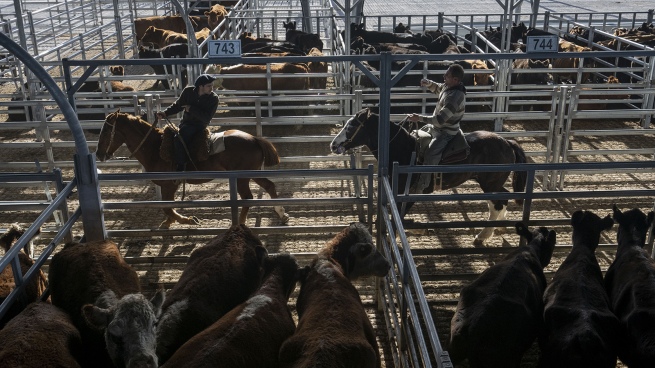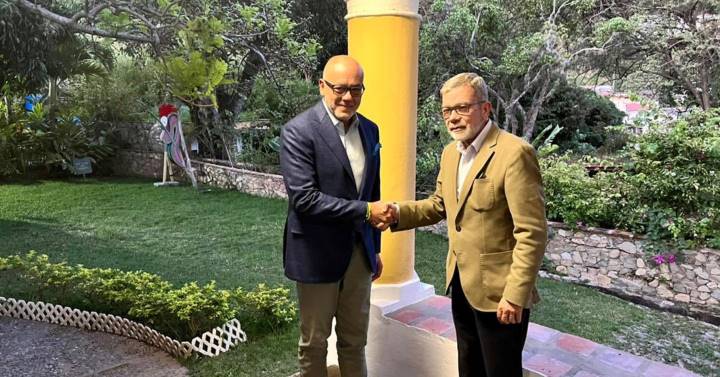The New Agro-Livestock Market (MAG) formally began operating this Tuesday in the Buenos Aires district of Cañuelas with the entry of more than 10,000 heads with falling prices, after the historic Mercado de Liniers closed its doors last Friday, after 122 years of activity.
A total of 10,477 head of cattle entered the new establishment this morning, orlocated at kilometer 86 of provincial route number 6in what constituted the official start of operations of the Agro-Livestock Market.
“Everything worked normal and in order with a good number of heads”He told Telam the former president of Mercado de Liniers SA and current director of MAG, Oscar Subarrocawho also highlighted that “the 45 consignment houses worked”.
“We have already had trial auctions since January and February,” added Subarroca, who stated that “from now on, will operate from Tuesday to Friday, except holidays”, one more day than in Liniers since he did it there, since the pandemic, only Tuesday, Wednesday and Friday.
The leader also anticipated that “this Saturday the first event will be organized at the MAG in Cañuelas with a steer contest, celebrating the centenary of the Argentine Angus Association”.

Regarding the modern facilities at the Cañuelas property, Subarroca admitted that “some works still need to be completed, including a complete module, but the basics are there to be able to operate,” he remarked.
For its part, the executive director of the MAG, Carlos Colombo, commented that “since March tests have been carried out in the new market, in principle on Mondays, although it was difficult to collect the property. In April it was changed to Fridays to simulate real entries and see how the market behaved with entries of 8,000 to 11,000 heads. Today was a totally normal day, with a much bigger inning than we expected.”
“We were pleasantly surprised with how it worked, how the farm was distributed and how the auctions were given. As for the movement and the operational issue in the corrals, it was also good,” Colombo concluded.
At the time, the director of the consignee Sáenz Vailente, Bullrich, Fernando Sáenz Valiente, believed that the market “It worked very well, with a very important entry of animals”.

“The operational part of sales was reasonable, with the shifts well managed. That was better organized than in Liniers. We are happy, and we hope that our staff will do the same, which is the most important thing. It is not easy to adapt to change, but we believe that time will give us a model market in South America,” he concluded.
The historic Mercado de Liniers closed its doors on Friday after 122 years of activitywith a celebration marked by the enthusiasm and nostalgia of workers and residents of the property located in the Mataderos neighborhood of Buenos Aires.
That day they worked from 7:30 am to 11:00 am, when operations at the Liniers Market officially ended and a series of celebrations began for the last day with musical shows.
The initial kick that determined the closure of the Liniers Market began in 2001 with the sanction of Law 622 by the Buenos Aires Legislature, which prohibited the entry of live cattle into the district with the exception of those destined for exhibitions or special activities.
After various sites were evaluated, such as the San Vicente and Mercedes districts of Buenos Aires, it was only in 2018 that the land in Cañuelas was chosen and purchased, and the construction of the new establishment began in 2020 with an investment of US$20 million.

Some of the MAG services
The MAG of Cañuelas has an area of 110 hectares, compared to 32 hectares of Liniers, as well roofed corrals and capacity to receive 12,000 heads of cattle per day.
As a novelty, service providers will have a space within the new complex, In addition to building a 120 room international chain hotel; convention center, housing with priority for the employees of the Market, service station and a shopping and gastronomic center.
Some of the authorities told Télam that the complex It will have a point of similarity with the annual Expoagro fair.
Another focus of the project will be the ecological treatment of waste and effluentsin addition to the use of rainwater for washing.
The new facilities will allow entry for 12,000 head daily with the possibility of expanding in the future to receive 6,000 more, and the expectation is that the new market will have the entry of 20,000 to 30,000 weekly heads.



















